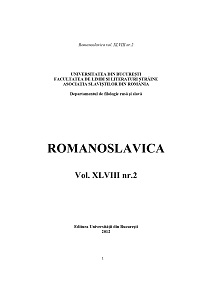Menţiuni ale habitatului românesc în cnezatul novgorodean
Mentions of the Romanian habitat in the Novgorod Principality
Author(s): Vlad D. GhimpuSubject(s): Local History / Microhistory, Middle Ages, Lexis, Eastern Slavic Languages, Philology
Published by: Editura Universităţii din Bucureşti
Keywords: Novgorod principality; Romanians; Middle Ages; toponimy; hydronymy;
Summary/Abstract: On the basis of an analysis of numerous documentary sources relating to the history of the Novgorod Principality the author reveals a lot of facts, including some specific linguistic data, which point on the presence of Romanians in these areas since the early Middle Ages. Toponyms and hydronyms found in chronicles, birch bark documents, and lapidary inscriptions confirm the presence of Romanian settlers in these territories. The Romanians-Wallachians left Glagolitic and Cyrillic inscriptions on the walls of the St. Sofia Cathedral, some birch bark documents in the Old East Slavic language could also be written by them. In the Novgorod chronicles along with Romanian names one can find Romanian words written or influenced by the Romanians, such as the word Korochun used as the name of Christmas. According to the author, the Romanians, whose presence in Novgorod and its environs is confirmed by numerous testimonies, participated in the foundation of the towns of Novgorod (its parallel name is Nougorod formed by a combination of the Romanian and Russian words) and Staraya Russa. The second conclusion relates to the controversial question of the origin of the term of Rus’. The author believes that it comes from the Romanians-Wallachians, who used this Latinized word for red color, and this was reflected in the name of the town of Rusa. Later this name has spread to the East Slavs and the Old Russian people, of which the Romanian settlers also were a part.
Journal: Romanoslavica
- Issue Year: XLVIII/2012
- Issue No: 2
- Page Range: 237-264
- Page Count: 28
- Language: Romanian

